I have lived around the river Erewash for the past 25 years, I’ve crossed it hundreds of times, I’ve run up and down it, biked along it and I’ve canoed down it. It has become a silent but familiar part of my life that I (and I suspect most people) just take for granted. I’m keen to better appreciate its scale, geography and impact on local people over history.
History & route
The name Erewash comes from the old English irre (wandering) and wisce (wet meadow), hence we have a wandering, marshy river. Other suggestions are that the name means ‘one that floods and drains very quickly’, which is certainly the case near where I live in Sandiacre. The river rises just south-west of Kirkby-in-Ashfield, flows west under the M1 then roughly south through Langley Mill, Ilkeston and Sandiacre to drain into the River Trent at Attenborough. As the crow flies the river is 25 miles long but the sinuous nature of it extends that a fair bit. Much of its route forms the border between Derbyshire and Nottinghamshire.

The river is never particularly wide or deep and flows quietly between noisy industrial parks and across wet meadows. But there are places along its course where the curves have been left untouched and here the river slows right down, the water dances and swirls around and the wildlife proliferates. Sadly these areas are under constant threat of being destroyed.
In literature

Eastwood-born writer DH Lawrence was inspired by the river and must have crisscrossed it hundreds of times as he walked, thought and wrote his stories of sexuality, emotional health and instinct. His writing expressed concerns about the dehumanising effects of industrialisation and modernity and we can imagine his increasing distress as his pristine Erewash Valley was cut through by the canal and then the railway. The Rainbow opens with the line below and the story develops into one that describes how the rural Brangwen family are increasingly separated from the industrial town of Ilkeston.
The Brangwens had lived for generations on the Marsh Farm, in the meadows where the Erewash twisted sluggishly through alder trees, separating Derbyshire from Nottinghamshire.
D.H. Lawrence
Industrialisation & re-routing
The Erewash has had a difficult past as it has had the full pressure of industrialisation thrown at it – pollution, sewerage, litter and the obligatory shopping trolley. Its wandering nature has ironically been its downfall as humans have tamed it into straight lines and culverts when it has interfered with our plans for development.
Below are images of the Stanton Gate area, close to my home, where the M1 crosses the Erewash. The Erewash was straightened in the 1950s to allow the M1 to enjoy an easier passage over it. Many of the twists that gave it its name were removed and it was culverted in places. It’s like the river has become a stretched piece of elastic and lost all of its character and quiet corners and it flows faster through the landscape, more ignorant of what lies on its banks.
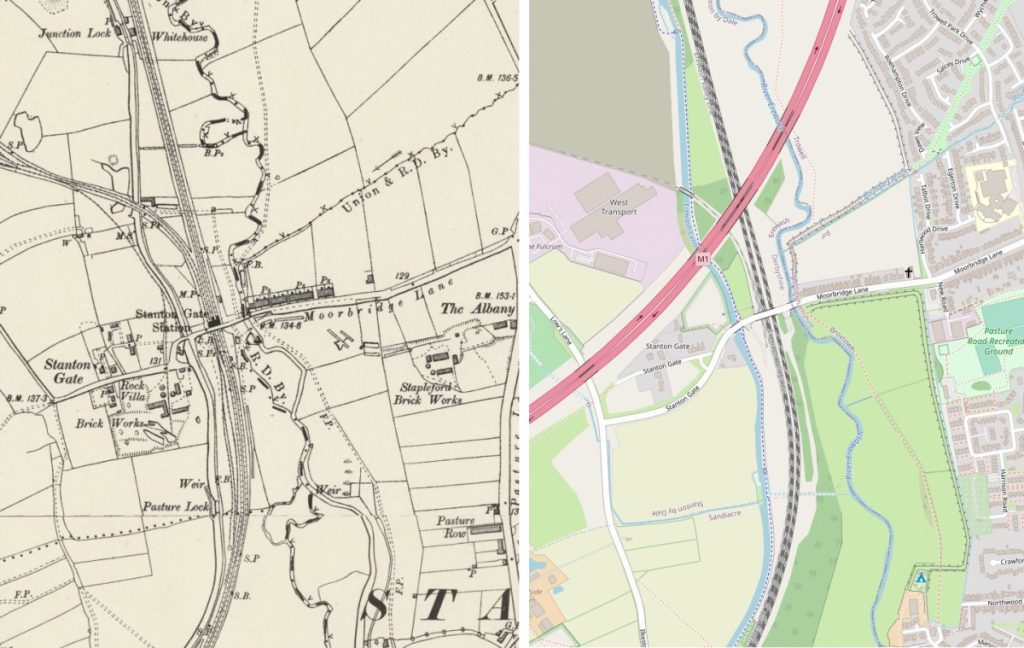
The construction of the M1 and the straightening of the river are shown below, which must have been a mammoth engineering task at the time. The destruction is unimaginable but when the river was let into its new straight channel it must have been a strangely satisfying sight. But all those wonderful curves have been lost forever.
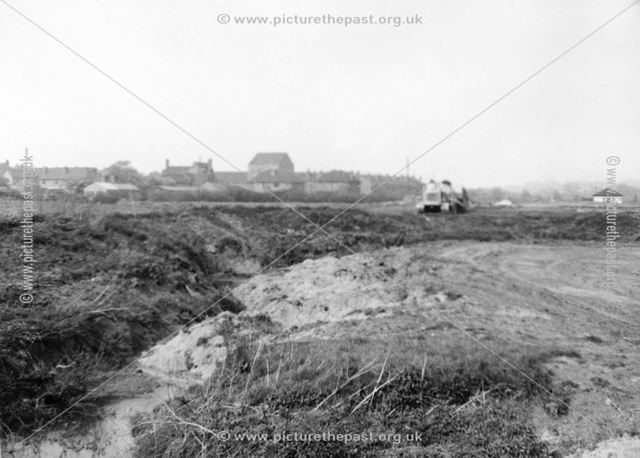

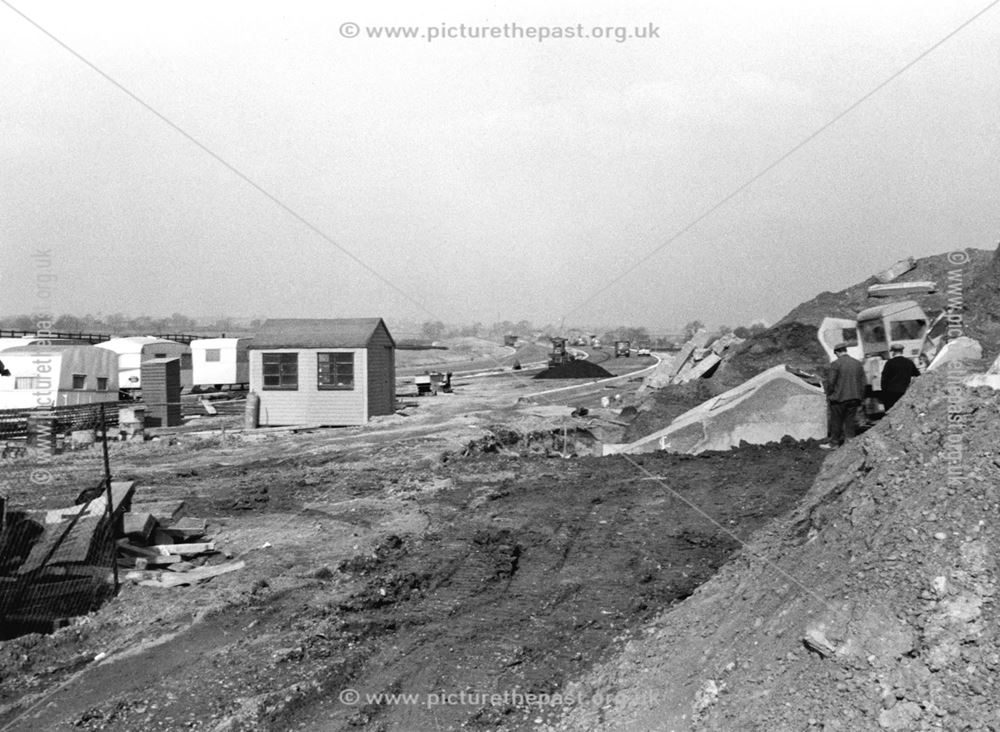
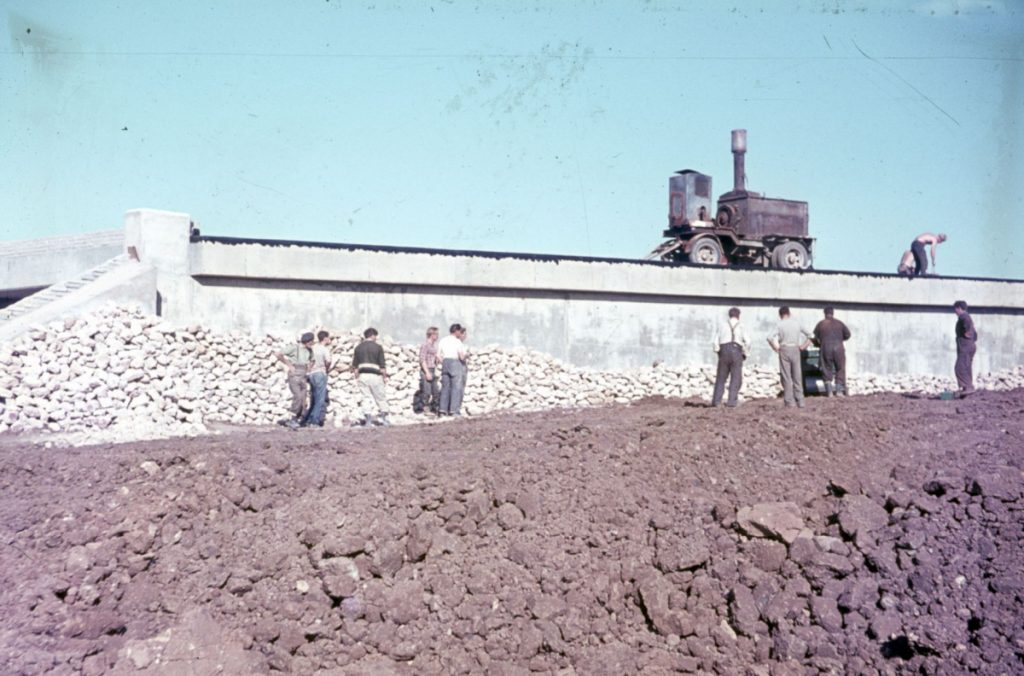
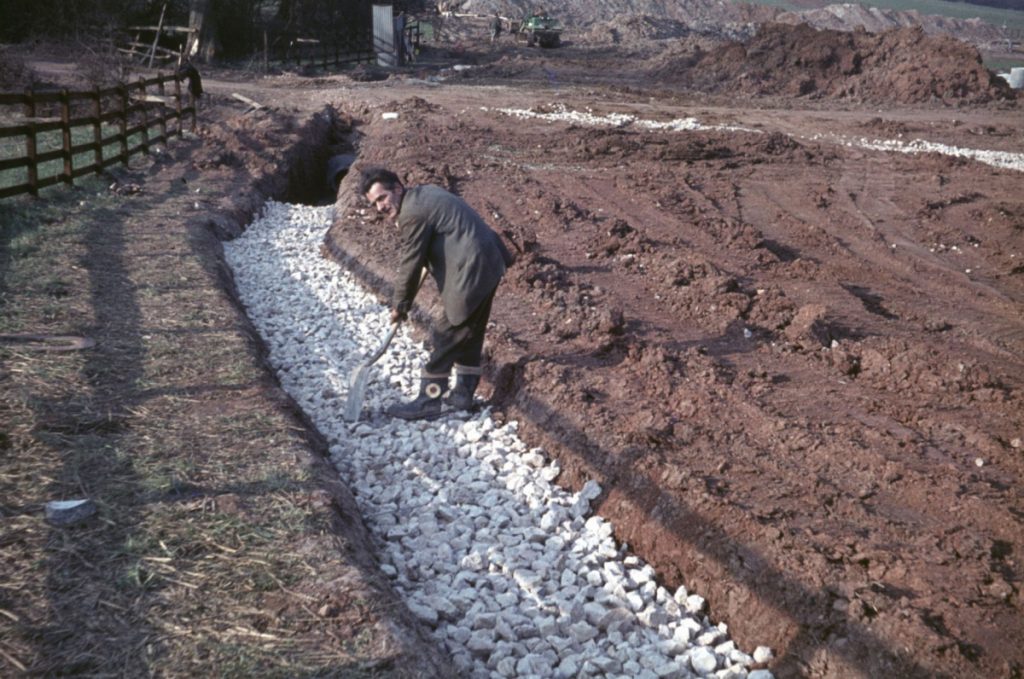
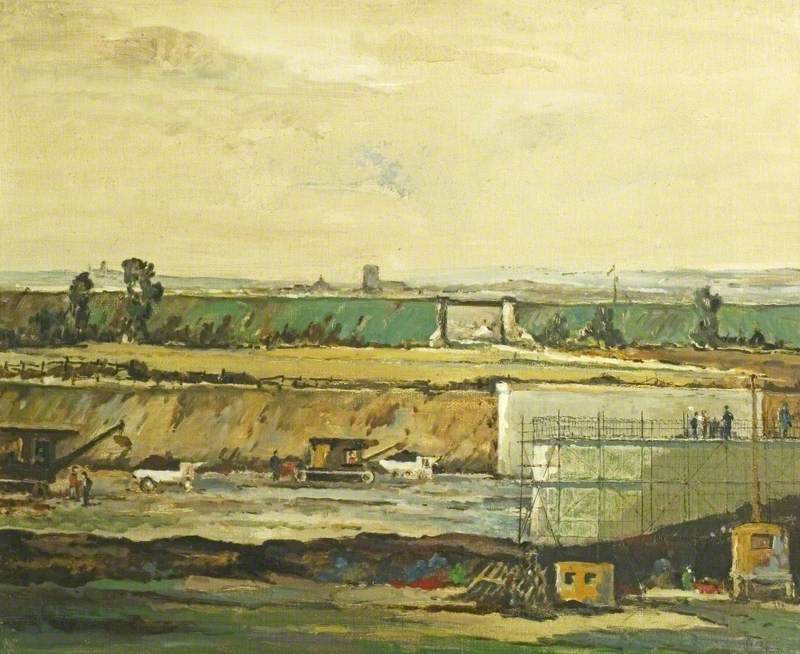
In recent years the Erewash has once again caused headaches, this time for the HS2 engineers who have proposed moving it once again to make way for yet another transport route, but we’ll come back to this later.
Finding the source & experiencing the floodplain
I had a trip upstream in January 2021 to find the source of the river, or as close as I could get to it. I found a fascinating route along fast culverted channels, through marshy land, into deep natural springs and eventually into a deep cut in the strangely light brown earth that led up to a spring and the source itself. I was never far from industrial or residential areas but at times it felt like an untamed natural wilderness that was hiding in plain sight, a kind of ancient underworld. The source itself reminded me of a pristine mountain stream and the deep gash in the landscape made it clear that a huge amount of water had washed down, along with an equal amount of substrate.
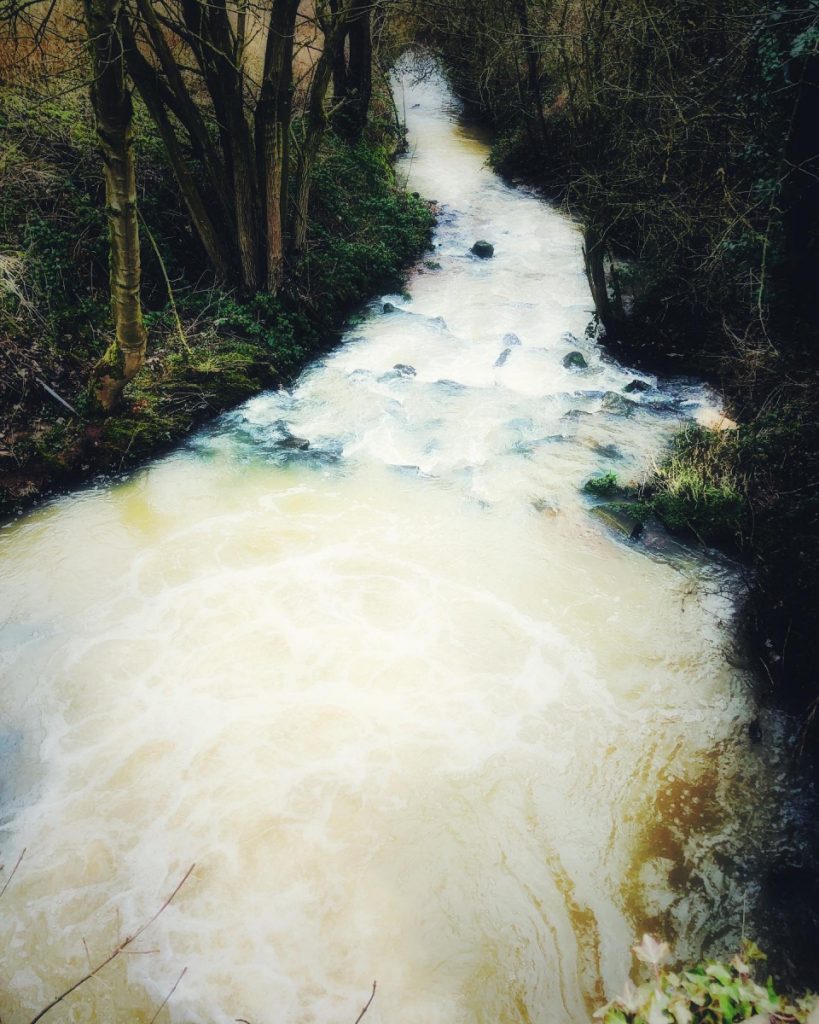
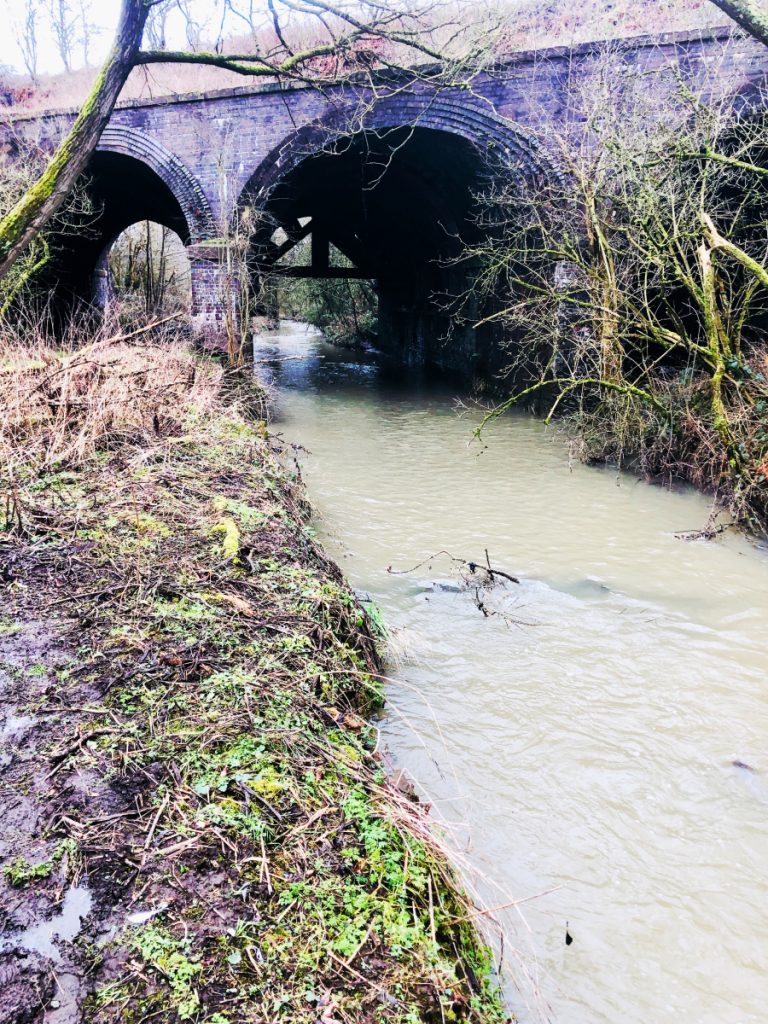
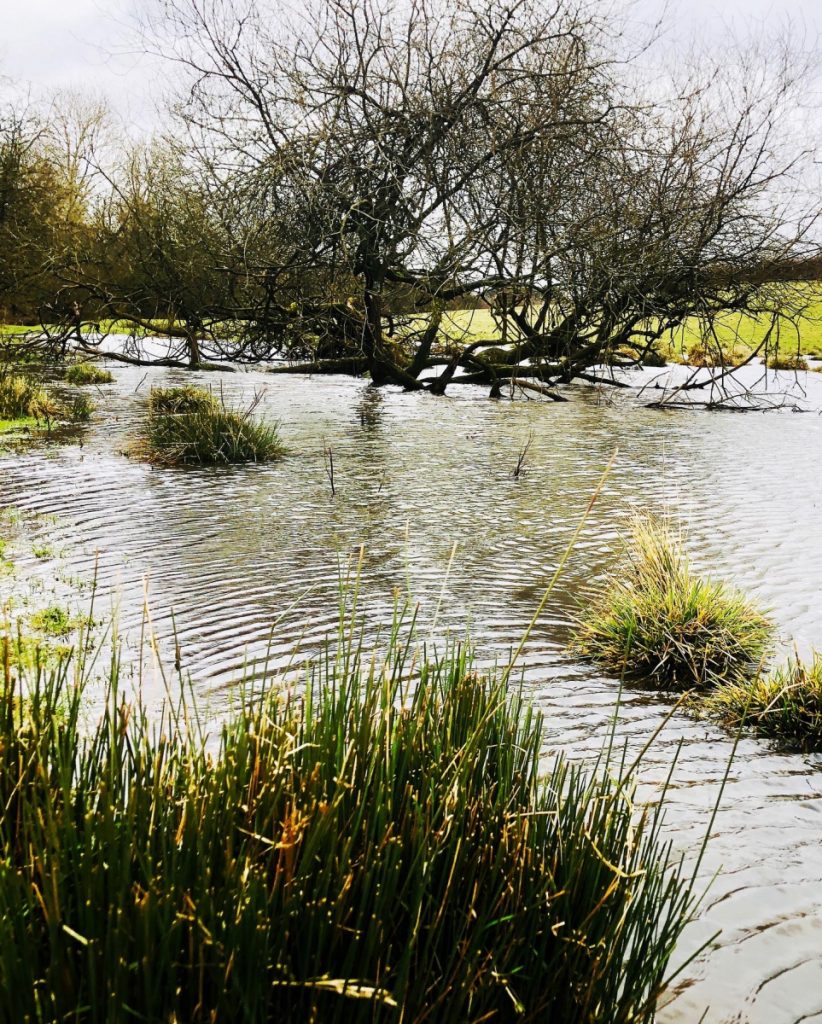
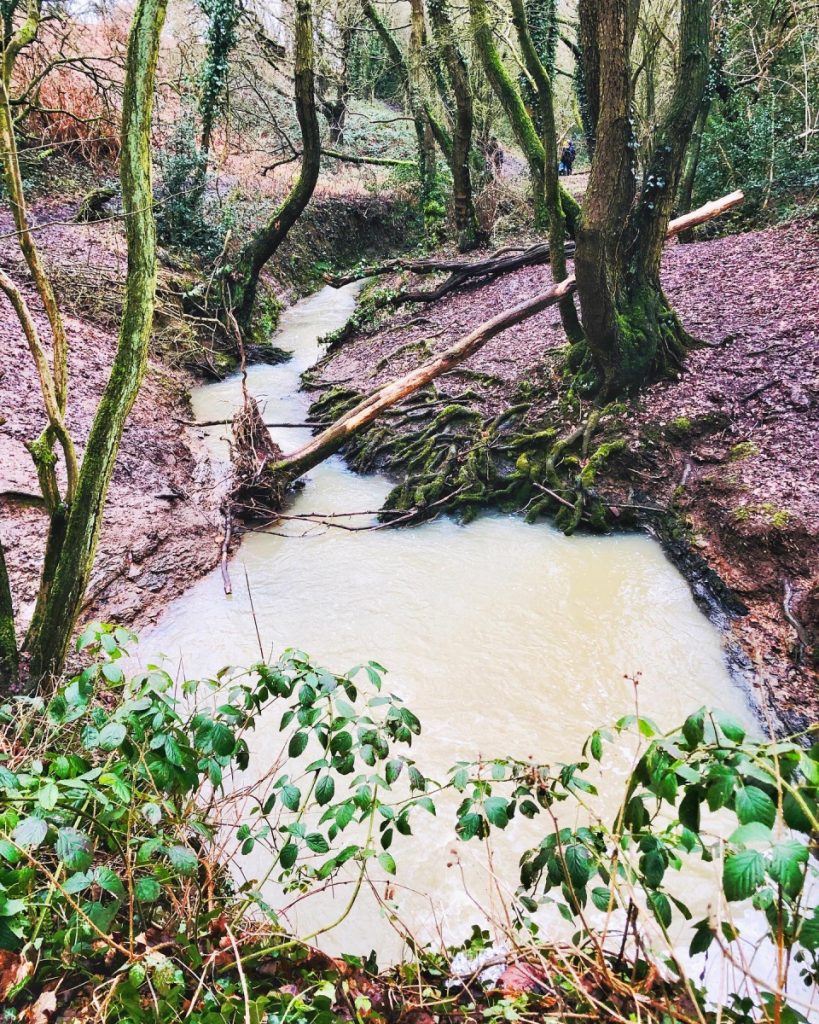
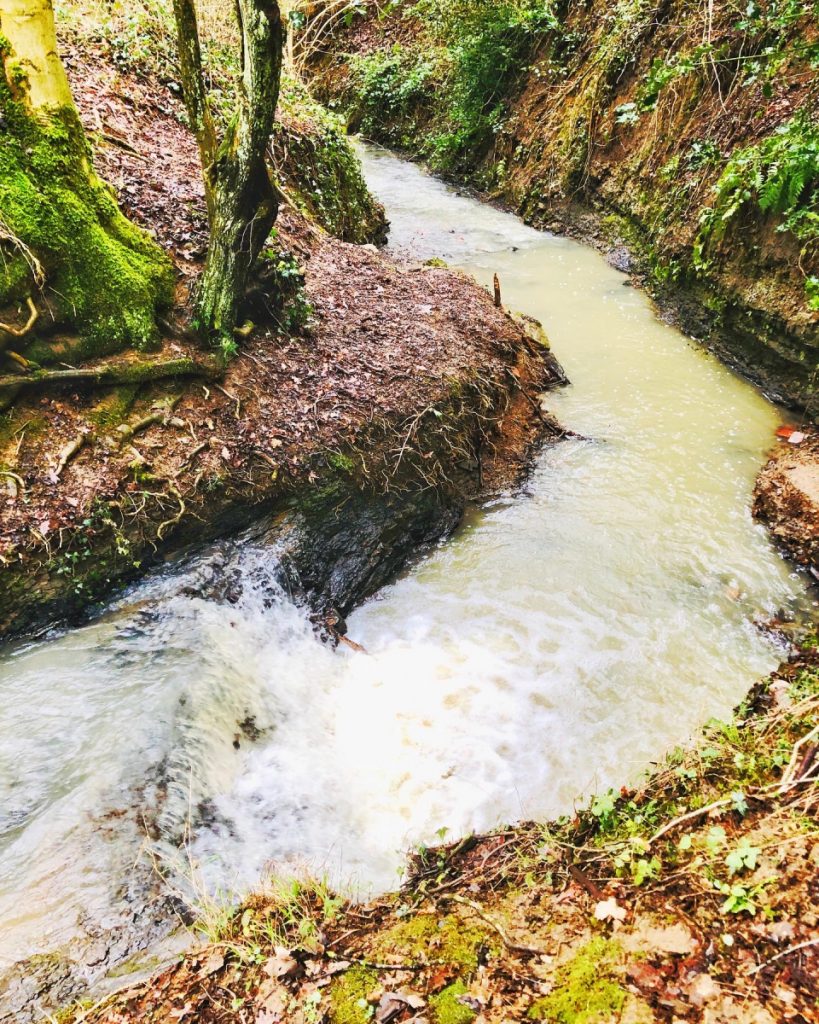
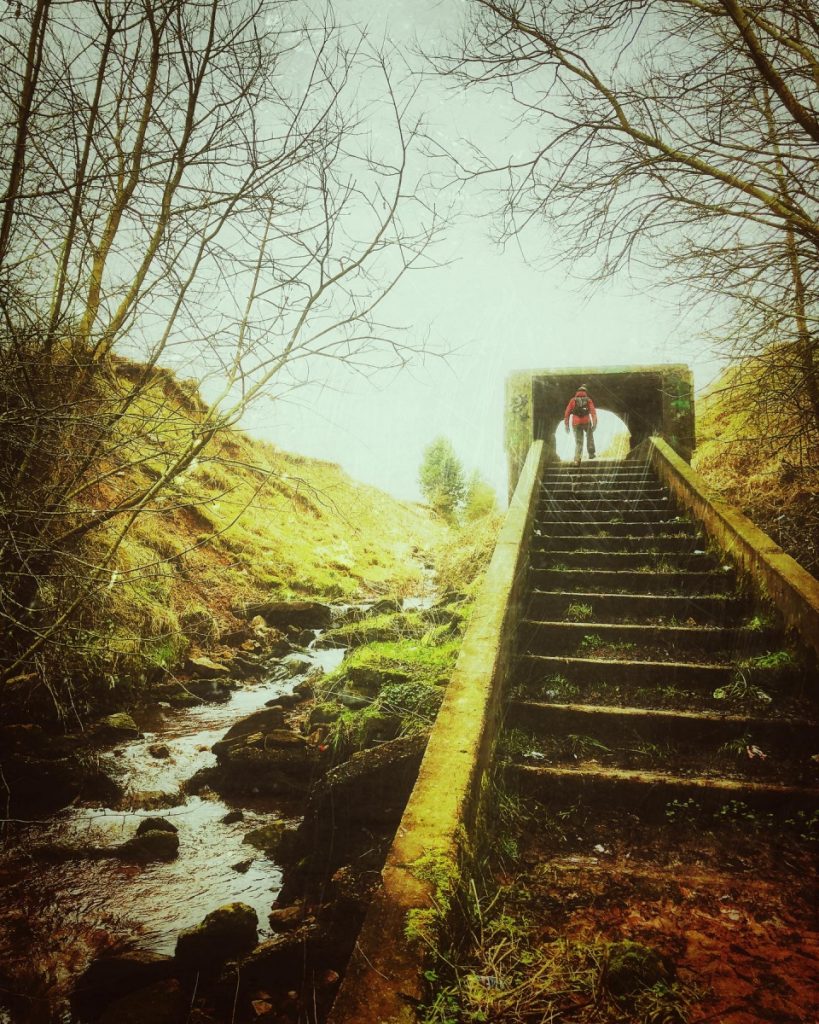
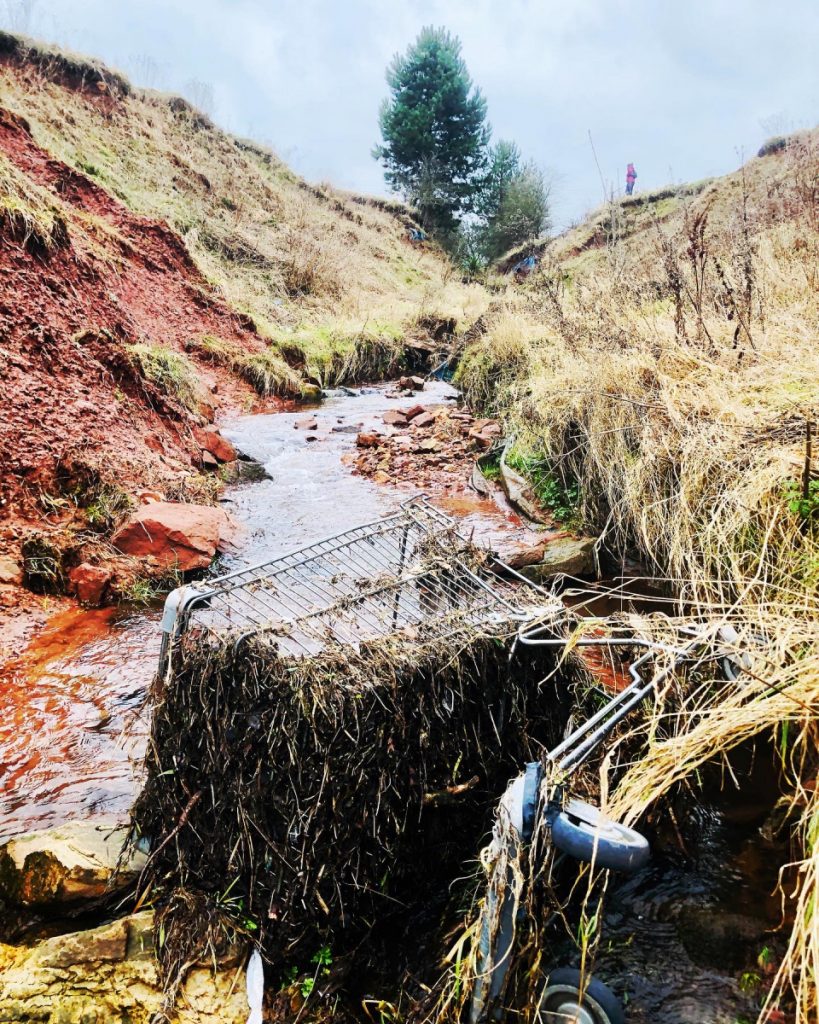
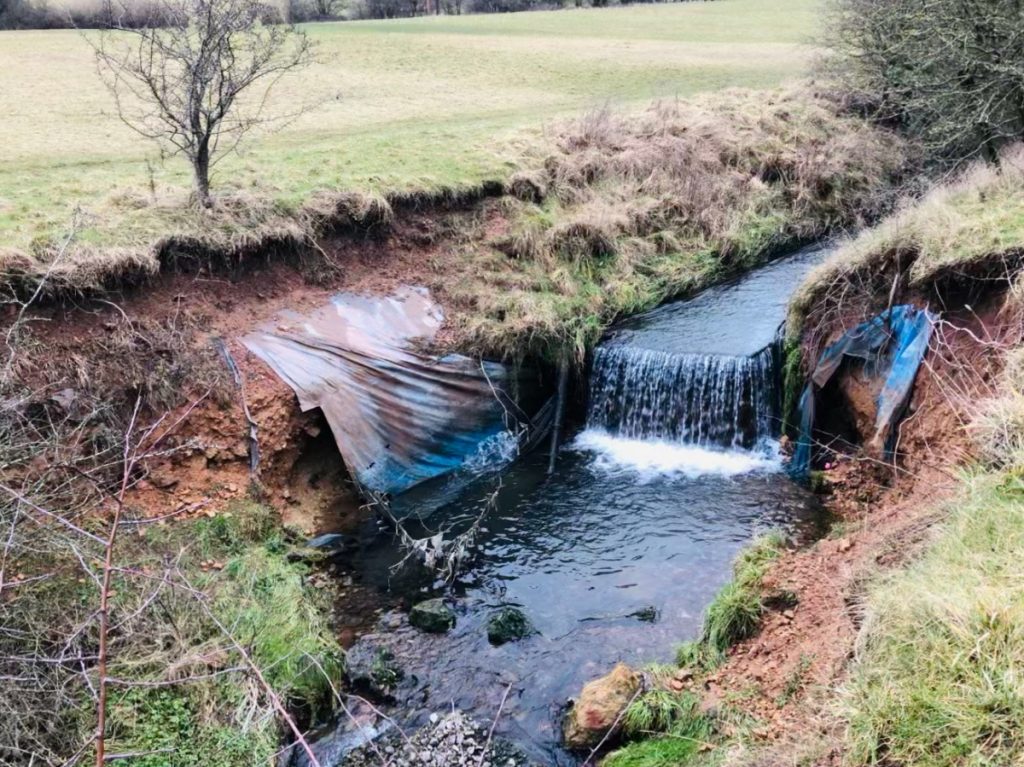
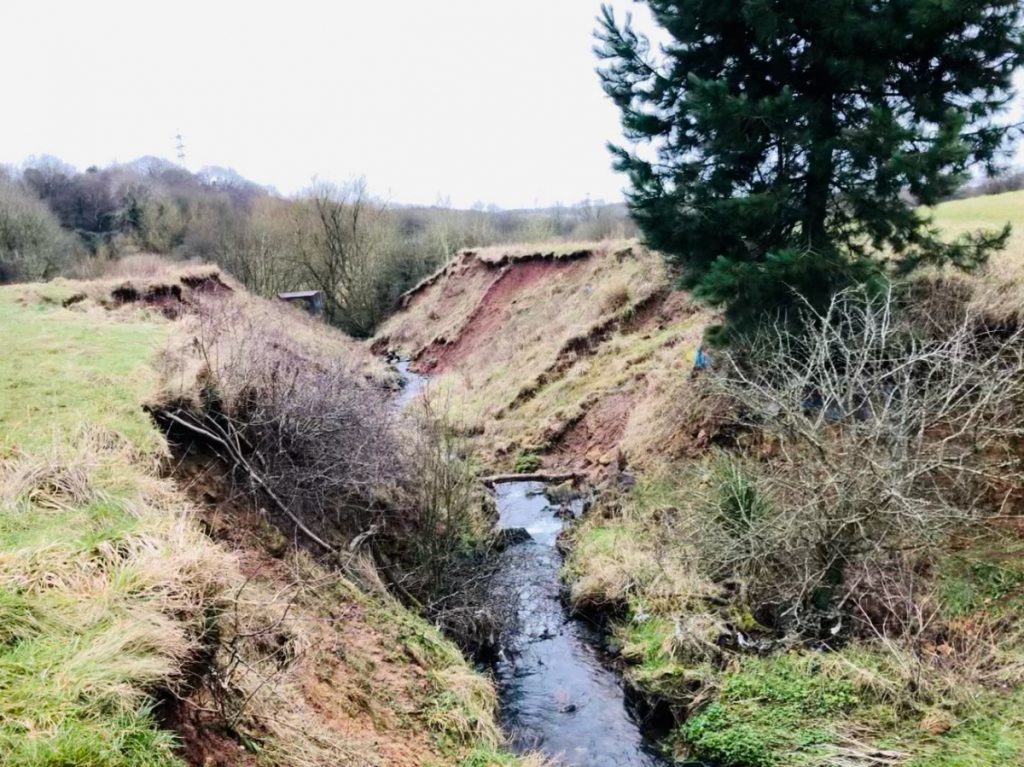
Then in February 2021 I caught the river in flood, just north of Sandiacre and it was a powerful sight. The river had vanished under a sea of water, a frightening but beautiful sight. The river had reclaimed its former ground, it found its fastest course, regardless of what restrictions man had imposed on it. Many people were out looking at the river as if they had rediscovered it, the huge volume of water had washed away pollution and litter and maybe for once it had fought back. A colonic irrigation of the highest order.
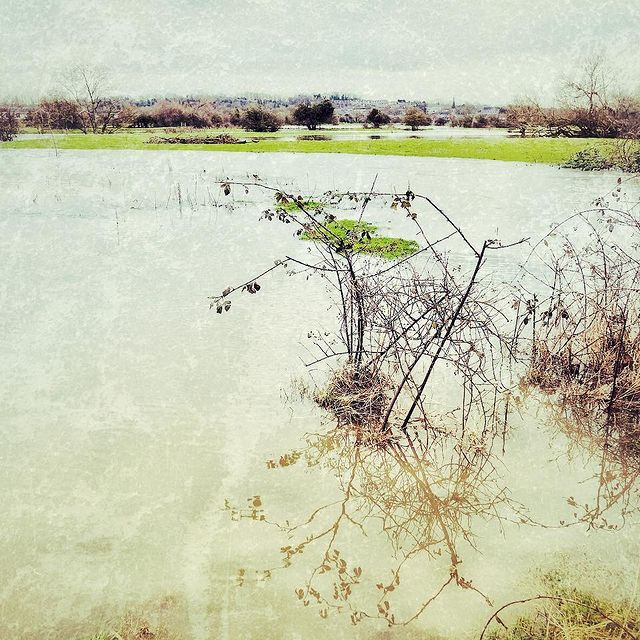
There are many aspects of the river that intrigue me; how its nature changes along its course, the historic literary associations and the apparent constant human desire to ‘straighten the river out’. Several experiments have already sprung to mind.
It is my belief that when we try to force our thoughts against nature nature will always fight back and the river Erewash should be a protected part of nature is our home area not named Erewash after the river yes we have the Erewash canal but then that again named after the river I live in long Eaton and Have done most of my life I’m 50 and I recognise the river as part of our area it is why the canal and alot of the Brock’s this way exists with out our beloved river Erewash what would actually give long Eaton it’s baeder from toton just like breaston is slowly becoming part of bling Eaton so would toton thank god that HS2 are struggling before they even reach this area so in my life time I will not see the mess if this area HS2 will make so that them with more money than sence can get to London in like 13mins faster we do all need to remember that HS2 is going to be first class only so not for the whole area they had been talk that a ticket from east Midlands park way to London is going to be around the 2hundred pound mark if it was finished in this yr 2023;so when it is finished it will certainly not be that adorable that they need to but a horrible looking Ariel track a both long Eaton and then mess up our river I think the long Eaton poeple should stand together instead of saying what can I do about it they should stand together against it as if alot of us dud that it would not be what can I do about it but a hundred of us could do alot to protect the beauty of our area
A very thoughtful article. I too live locally and after years of canal walking and cycling along the Erewash valley, I recently “discovered” the river itself. The section above Bennerley Viaduct by Ilkeston still has its original curves and it is a delightfully slow and meandering riverside walk. The old faded-green metal footbridges are still in place seemingly lost from another age. There are projects around the country that have re-instated river curves taken out in the 50’s and the Erewash’s own powers of recuperation remind me of one of its tributaries, the Cuttail Brook by Annesley. It has burst out of its man-made pipeline like the Erewash at Kirkby and created a deep grove in the landscape with waterfalls, marshy meanders and a perfect swimming lake with fresh water mussels on the shoreline. A hidden gem that 50 years ago was a pit tip. Let nature be and with time it will heal itself.
A very interesting article that I came across whilst trying to research the Erewash to assist in identifying an old WWI era photo. Does anyone who has travelled the river ever seen a large rock about 5 ft high beside the River, possibly near to Ilkeston?
Hi Lilian,
Many thanks for the feedback. I’m not aware of a rock as you describe. It might be worth contacting the Erewash Museum, which is based in Ilkeston: https://www.facebook.com/ErewashMuseum/?locale=en_GB